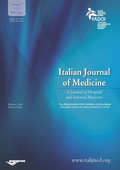Reviews
2 December 2013
Vol. 8 No. 3 (2014)
How to select appropriate hemoglobin target levels on health-related quality of life and outcomes for patients with chronic kidney disease?

Publisher's note
All claims expressed in this article are solely those of the authors and do not necessarily represent those of their affiliated organizations, or those of the publisher, the editors and the reviewers. Any product that may be evaluated in this article or claim that may be made by its manufacturer is not guaranteed or endorsed by the publisher.
All claims expressed in this article are solely those of the authors and do not necessarily represent those of their affiliated organizations, or those of the publisher, the editors and the reviewers. Any product that may be evaluated in this article or claim that may be made by its manufacturer is not guaranteed or endorsed by the publisher.
1390
Views
1225
Downloads
272
HTML






